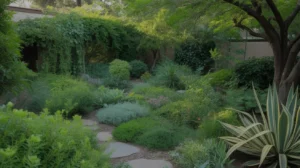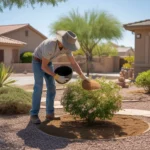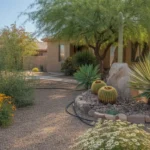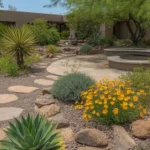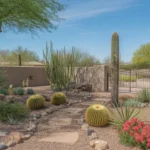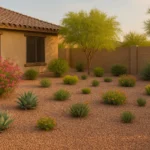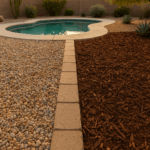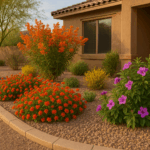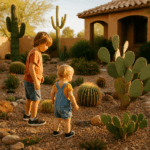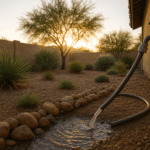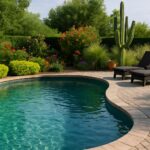Shady spots in Gilbert yards can feel like a landscaping challenge, but with the right plants and techniques, you can transform those dim areas into lush, thriving shade gardens. Shade landscaping is all about embracing what you have and choosing plants that will flourish in lower light conditions. With some smart strategies, you can turn shady corners, areas under trees, or north-facing beds into beautiful, low-maintenance oases that enhance your overall yard. Here are some expert tips on mastering shade landscaping in Gilbert.
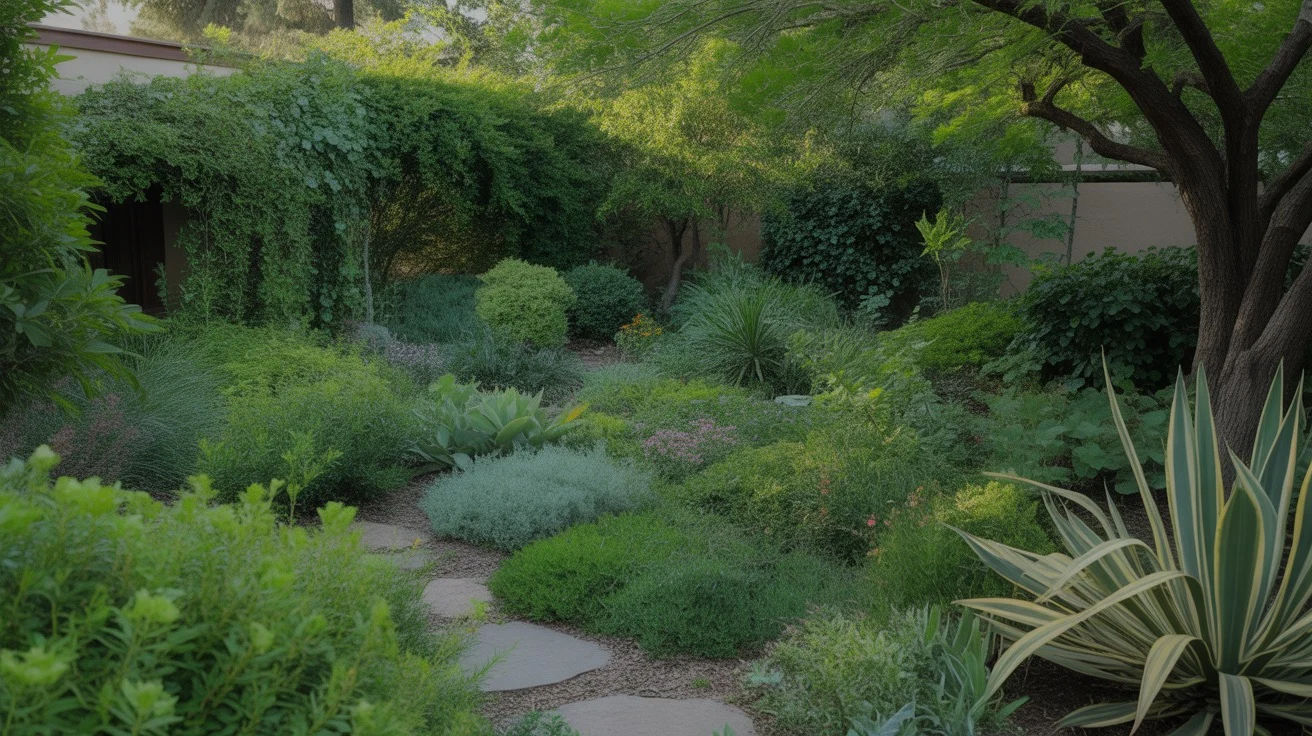
Evaluate Your Shade Conditions
Not all shade is created equal. Before you start picking out plants, take time to observe the light conditions in different parts of your yard throughout the day. You may have areas of light shade that get filtered sun, medium shade, or dense shade that rarely sees direct light.
Also consider factors like soil moisture, as areas directly under trees can be quite dry due to the tree roots absorbing available water. Knowing your specific shade situation will help guide your plant selections for the best success.
As Jaime Hernandez, owner of Blooming Desert Landscaping in Gilbert notes, “Matching the right plants to your particular shade conditions is key. What works great in filtered shade may struggle in full shade. I always tell clients to spend time really studying the light before buying any plants.”
Choose Shade-Loving Plants
While some sun-loving favorites may not be ideal for shady spots, there are plenty of beautiful plants that thrive in lower light. For blooming perennials, consider Coral Bells, Hellebores, Clivia, Ajuga, Primrose, or Astilbe.
For attractive foliage, Hostas, Ferns, Caladiums, Brunnera, and Japanese Forest Grass are excellent choices. You can also incorporate shade-tolerant groundcovers like Liriope, Sweet Woodruff, or Creeping Jenny.
“I love using textural plants in shade gardens,” says Hernandez. “The feathery fronds of ferns or the glossy leaves of Liriope can really make a shady bed pop, even without a ton of flowers. It’s all about combining different foliage shapes and colors.”
Layer Your Plantings
Just like in sunny gardens, shade gardens look best when you layer plants of varying heights. Use taller plants like Fatsia or Mahonia in the back, mid-sized mounding plants in the middle, and low groundcovers in front.
This creates a lush, filled-in look and helps cover bare spots between plants. Layering also lets you maximize your space and create a diverse, thriving shade ecosystem.
“Shade gardens in Gilbert don’t have to be flat or one-dimensional,” advises Hernandez. “By layering and staggering your plants, you create a dynamic landscape with depth and interest, even in lower light.”
Amend the Soil
Many shady areas, especially those under mature trees, can have poor, compacted soil depleted of nutrients. Before planting your shade garden, amend the soil deeply with organic matter like compost, aged manure, or peat moss.
This will improve drainage, moisture retention, and soil structure, giving your new plants a strong foundation. Aim to work in 3-4 inches of organic matter to a depth of 12 inches for best results.
Hernandez also recommends getting a soil test if you suspect bigger issues. “In some older Gilbert neighborhoods, soil under big trees can get very acidic over time. A simple pH test can tell you if you need to add lime to balance things out before planting.”
Utilize Hardscaping
Hardscaping features like stepping stones, gravel paths, or decorative boulders can be great additions to shade gardens. They help define the space, create structure, and add visual interest.
Meandering paths invite exploration and let you appreciate the shade plantings from different angles. Boulders can serve as eye-catching focal points and also provide a natural spot for shade-loving plants to nestle around.
“In a shady side yard or corner, I love creating a little destination with a bench, small patio, or bistro set,” says Hernandez. “Hardscaping makes the shade garden feel intentional and inviting, not just an afterthought.”
Adjust Your Watering
Shade plants generally require less water than those in full sun, so you’ll need to adjust your irrigation accordingly. Overwatering is one of the quickest ways to kill shade plants, as soggy soil leads to root rot.
Water deeply but less frequently, allowing the soil to dry out slightly between waterings. If you have an automatic sprinkler system, consider putting shady zones on a separate valve so you can reduce the watering time compared to sunnier areas.
Hernandez also stresses the importance of observation. “Don’t just set your watering schedule and forget it. Keep an eye on your plants and check the soil moisture regularly. You may need to tweak things as the temperatures change throughout the year in Gilbert.”
Mulch, Mulch, Mulch
A 2-3 inch layer of organic mulch is a shade gardener’s best friend. It helps retain soil moisture, moderates soil temperature, suppresses weeds, and breaks down over time to nourish the soil.
Opt for natural materials like shredded bark, wood chips, pine straw, or even fallen leaves. Avoid mounding mulch against plant stems, as this can trap moisture and lead to disease. Instead, create a donut shape with a slight dip in the center around each plant.
“In Gilbert, I’m a big fan of shredded bark mulch for shade gardens,” shares Hernandez. “It has a nice, natural look and really helps keep the soil moist and cool under our intense Arizona sun.”
Embrace Shade-Loving Containers
If you have very dense shade or challenging areas like narrow side yards, consider using containers to add pops of color and interest. Many shade plants perform beautifully in pots, as long as you choose a high-quality potting mix that drains well.
Ferns, Begonias, Impatiens, Torenia, and Caladiums are all excellent options for shady container gardens. You can also use pots to elevate trailing shade plants like Creeping Jenny or Vinca vine for a dramatic, whimsical effect.
Hernandez loves using colorful glazed pots in unexpected spots. “A big blue pot overflowing with bright green ferns can instantly brighten up a dim corner. Containers let you introduce color and personality into shady areas where in-ground planting might be tricky.”
Be Patient
Shade gardens are often slower to fill in and reach their full potential than sunny landscapes. The lower light levels mean growth tends to be more gradual, so it’s important to be patient and enjoy the process.
Over time, as your shade plants mature and knit together, you’ll be rewarded with a serene, lush landscape that feels like a cool, calming retreat from the intense Gilbert sun. Don’t be afraid to experiment and try new plant combinations each year to find what works best for your specific conditions.
“The key with shade landscaping in Gilbert is to embrace the process,” affirms Hernandez. “It may take a few seasons to dial in your plant palette and design, but the end result is so worth it. Shade gardens add a whole new dimension to your yard.”
With these smart tips, you’re well on your way to transforming the shady areas of your Gilbert yard into thriving, beautiful spaces. By choosing the right plants, building healthy soil, and creating thoughtful designs, you can make the most of even the shadiest spots. So embrace the shade and start crafting your own backyard oasis!

